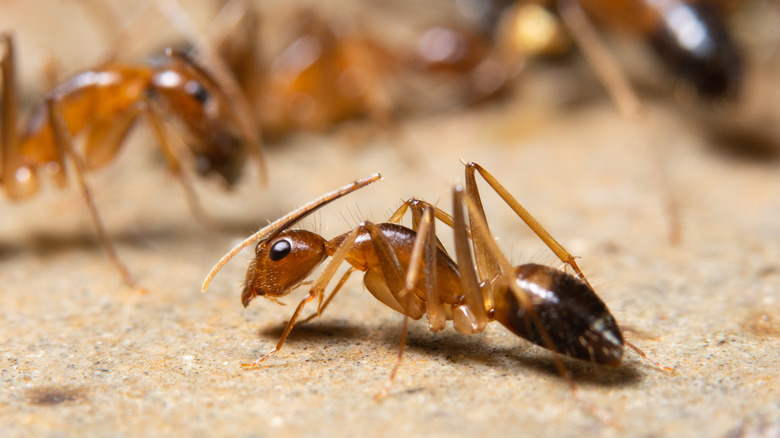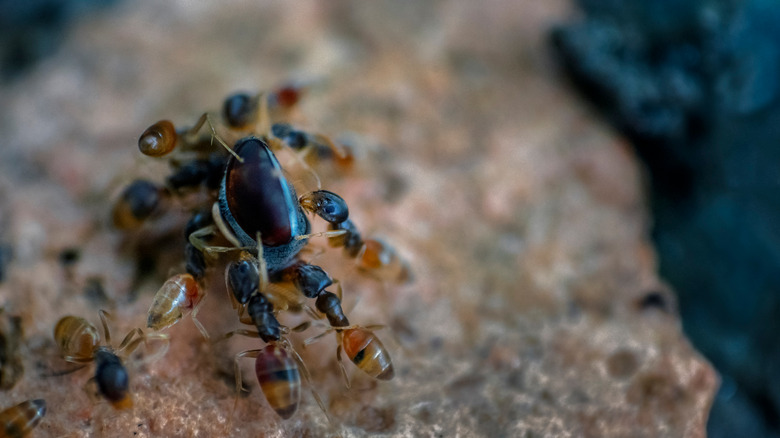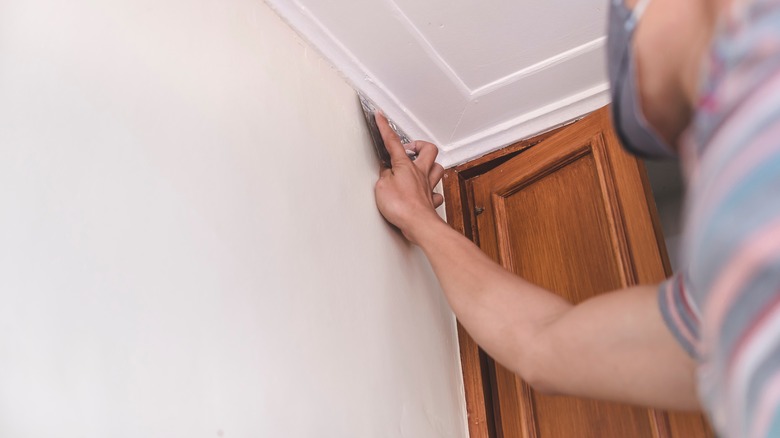How To Identify Ghost Ants (And Get Rid Of Them For Good)
Ghost ants are warmth-loving insects that can live both indoors and outdoors. They're commonly found in kitchens and bathrooms — those high-traffic zones where you least want to see pests. At a quick glance, ghost ants are easy to overlook due to their small size, typically between 1.3 and 1.5 mm. Yet, upon closer inspection, their distinct coloration sets them apart. Their dark head and thorax starkly contrast with a translucent, almost ghostly, abdomen and legs. This appearance lends them the moniker of 'ghost ants.' If you think you've got an infestation, it also helps to observe their activities and understand their behavioral traits.
The inconvenience these small critters bring into your home is not really hazardous, and they don't pose risks to your home's structure or your well-being, but they still disrupt the tranquility of your living spaces. This is a good enough reason to take action. However, you'll find that they are difficult to remove, especially if you've unsuccessfully tried over-the-counter insect repellant sprays. Because they don't easily succumb to general ant treatments, accurate identification is the cornerstone to successfully rooting them out of your living space for good. Once you know these identifying features, you can be certain whether the pests you're dealing with are ghost ants and take appropriate action.
Understanding behavior and signs of infestation
When it comes to behavior, these tiny intruders are extremely adaptable, making themselves at home in a variety of environments. When outdoors, they tend to nest in moist, protected spots, such as under logs or layers of mulch. On the inside, they are attracted to warm and humid areas like kitchens and bathrooms. They're not shy about nesting in less visible areas, such as wall voids or behind baseboards. Geographically, these ants show a strong preference for warm climates. In the United States, they are predominantly found in Florida, particularly in its southern regions. However, they do appear in other areas of the country, most notably in greenhouses that offer tropical conditions they find appealing.
Regarding their dietary preferences, ghost ants are not very picky. They are omnivores with a sweet tooth. Spotting these ants around sugary spills, food crumbs, or any area where sweet substances are found can strongly indicate that you're dealing with ghost ants. Beyond the obvious signs of seeing ants around your home, other indicators include small mounds of excavated material near their nesting sites, which are generally common with ants.
The problems they cause might not be severe, but they can spoil food and create an unclean environment, adding unnecessary stress to your daily life. While they may not be health hazards or structural threats, their persistence and ability to adapt to various environments make them problematic, further complicating the eradication process.
How to get rid of ghost ants
Once you're certain of what you're dealing with, it's time to get rid of these ants — and make sure they stay gone. Traditional chemical sprays usually aren't effective and can even exacerbate the problem. The colony may scatter and create new colonies, worsening your ant problem. A more effective strategy involves using gel-based ant bait. The ants are attracted to the gel, consume it, and return it to their nest. Over time, this eliminates the entire colony, delivering a more lasting solution.
Begin by minimizing what attracts them in the first place. Any vegetation touching the exterior of your house can serve as a bridge for ghost ants. Trim back bushes, shrubs, and tree branches to eliminate these natural pathways. Next, turn your attention to food sources. Store food in airtight containers and promptly clean up any spills. Moisture is another big draw for ghost ants. Leaky pipes, poor drainage, or any form of standing water can serve as an invitation. Promptly fix any leaks and seal gaps or cracks that may serve as entry points. Your home must also be well-ventilated to reduce humidity. A dehumidifier can help in spaces that tend to get damp, like basements or bathrooms. Lastly, preventive measures are invaluable in keeping your home free from a recurring ant problem. Regularly inspect your home for early signs of infestation, especially if you've had issues before.


